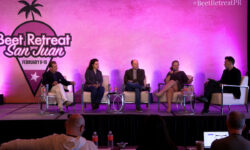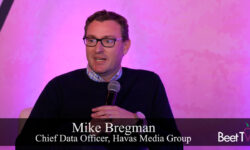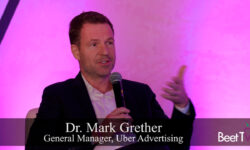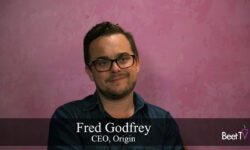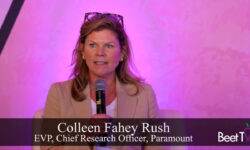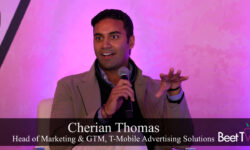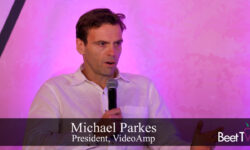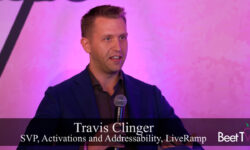SAN JUAN, PR — What could be more mobile than a mobile? For a growing number of advertising enablers, the answer is “cars”.
As Uber and Lyft grow their own in-car and in-app advertising businesses, T-Mobile, too, has got in on the action.
In this video interview with Beet.TV, Cherian Thomas, Head of Marketing & GTM, T-Mobile Advertising Solutions, explains the company’s offering.
Cars get connected
In January 2022, T-Mobile acquired Octopus Interactive, the national network of interactive video screens inside Uber and Lyft vehicles.
T-Mobile claims to be operational in 40,000 drivers’ vehicles, delivering more than 400 million 30-second video ads per month.
“We created the largest network of interactive entertainment screens inside of Uber and Lyft vehicles,” Thomas says. “We contract with the best drivers in the country, we put a screen inside the headrest. Riders get to engage with our screens by playing games – we want to have fun and make it a lean-in experience.
“Because we have the rider’s attention and we have the tablet location, we’re able to deliver location based interactive ads or branded games or reactive surveys, to a captive audience, a leaned-in engaged audience, this highly-sought-after 18-to-49 audience, which is hard to reach.
“This is a captive setting – you have someone that’s 20 minutes of their time, and we’re able to deliver sight, sound, and motion.”
Un-carrier’s ad odyssey
T-Mobile Advertising Solutions uses data captured about its mobile phone subscribers’ actual app ownership and engagement to create targetable audience segments.
It claims a reachable audience of 50 million households and 110 million consumers.
The division operates an ad platform dubbed Magenta. Its channels include mobile, video and ride-share car screens.
Thomas says the people it reaches in Uber and Lyft cars are cord-cutters, cord-nevers, car-cutters and car-nevers, and are more likely to be sVOD subscribers and iOS users.
In-car is hotting-up
Uber and Lyft have their own advertising operations, which have begun largely in their apps.
Uber recently rolled out tablet screens in some of its cars in Los Angeles and San Francisco.
Uber’s New Formats Light Up Ad Screens, From Back Seat To Entrée
Like Uber, T-Mobile is finding entertainment companies to be a keen ad buyer.
But the liminal nature of a journey also affords itself to food choices, so quick-service-restaurants (QSRs) are another major category using the service, Thomas says.
You’re watching coverage of Beet Retreat San Juan 2023, presented by LiveRamp, Madhive, Magnite, Paramount, T-Mobile Advertising Solutions and VideoAmp. For more videos from the Beet Retreat, please visit this page.






